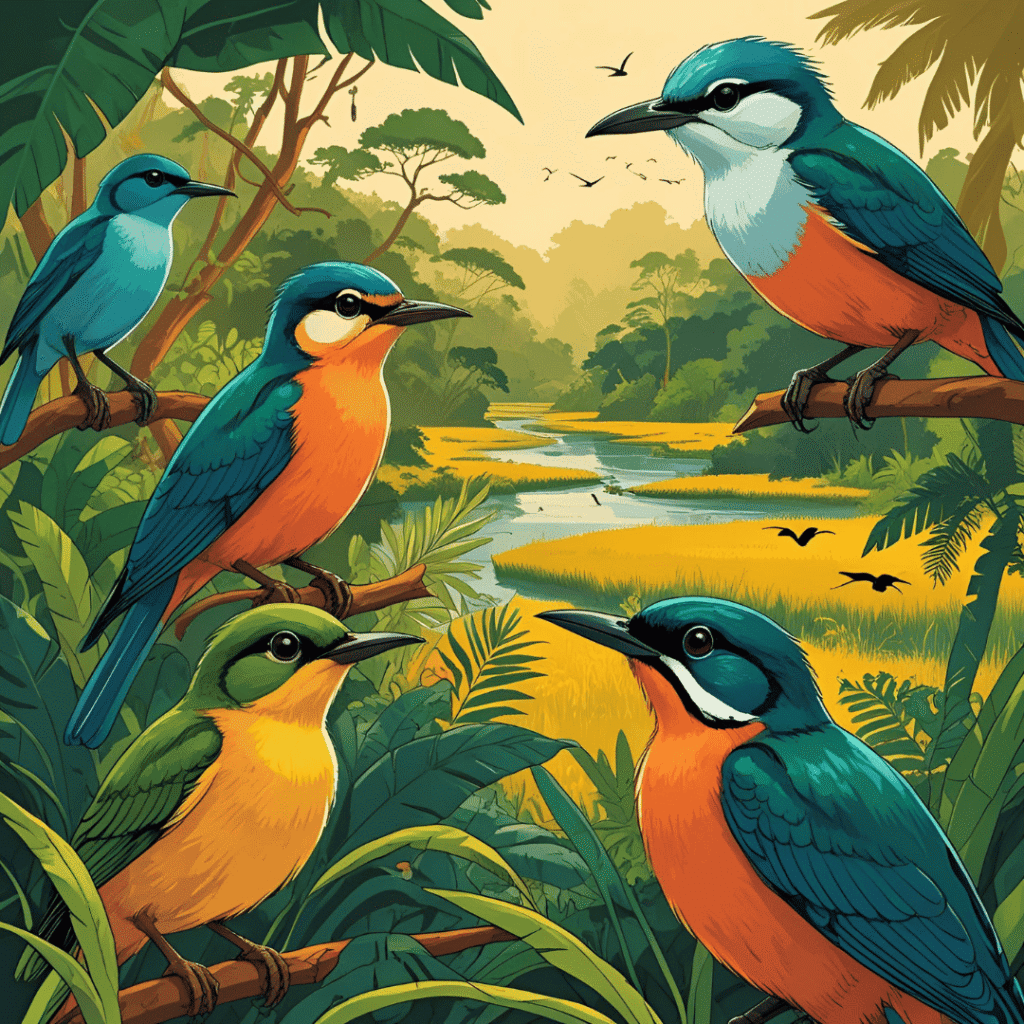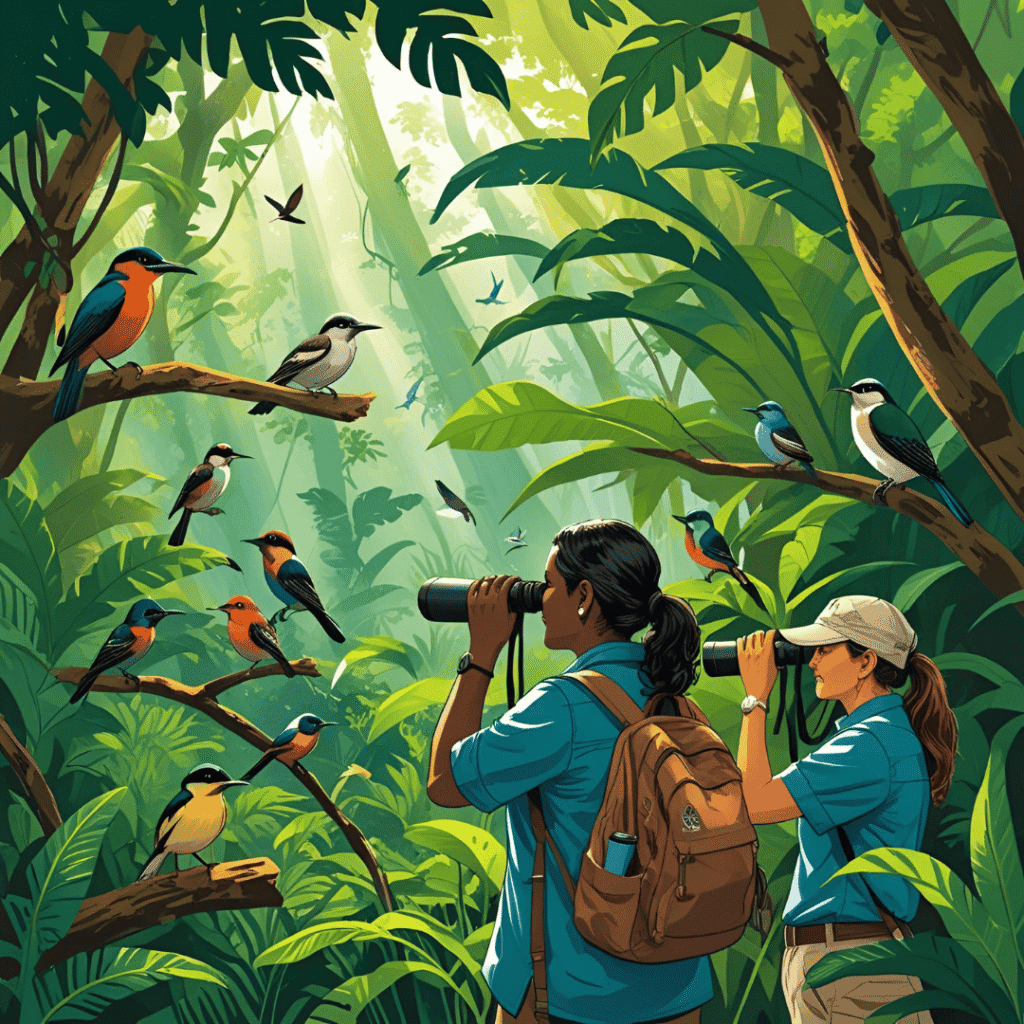10 Untamed Wonders of Sinharaja Rain Forrest You Must See
Sinharaja Rain Forrest: The Ultimate Explorer’s Guide to Sri Lanka’s Living Cathedral For countless nature lovers, sinharaja rain forrest conjures images of emerald canopies, secretive endemics, and whispering streams. Therefore, if you crave an immersive, off-grid escape within Sri Lanka’s beating green heart, this definitive guide unpacks every detail you need—trails, permits, wildlife, and conservation insight—to plan an unforgettable trek. Table of Contents Why the Sinharaja Rain Forrest Matters Globally Sinharaja was declared a UNESCO World Heritage Site in 1988, chiefly because it shelters over 60 % of Sri Lanka’s endemic trees and 50 % of its endemic mammals, birds, butterflies, and amphibians —an astonishing statistic for a reserve spanning only 21 km east to west. Moreover, global organizations such as UNESCO and the IUCN label the sinharaja rain forrest a living laboratory of humid-zone biodiversity. For instance, the forest hosts mixed-species bird flocks so large they resemble feathered rivers flowing through the understory. In addition, Sinharaja’s intricate root systems stabilize local watersheds, therefore reducing downstream flooding. Consequently, safeguarding the sinharaja rain forrest is not merely a national duty; it is a planetary imperative. For deeper context, read UNESCO’s official profile. External Link: UNESCO Quick Facts About Sinharaja Rain Forrest Fact Detail Location Southwest Sri Lanka—straddling Sabaragamuwa & Southern Provinces Size Approx. 11,200 ha (core) + 24,000 ha buffer zone Altitude Range 200 m to 1,170 m above sea level Annual Rainfall 3,600–6,000 mm; therefore pack rain gear year-round Key Endemics Sri Lanka blue magpie, red-faced malkoha, purple-faced leaf monkey Entry Gates Kudawa (Northwest), Pitadeniya (South), Morningside (East) Guide Requirement Mandatory—guides double as conservation stewards Best Months January–March & August–September (relatively low rainfall) Planning Your Visit to Sinharaja Rain Forrest Meticulous planning maximizes sightings and serenity. Moreover, it supports sustainable tourism by minimizing human impact. Best Seasons for Sinharaja Rain Forrest Trails While mist-laden mornings grace Sinharaja every month, rainfall spikes from April–July and October–December. Therefore, many travelers favor January–March for clearer canopy views and safer footing. Nevertheless, shoulder months—especially August—offer vivid herpetofauna activity, for instance the shimmering Ceylon emerald spread-wing damselfly. Pro Tip: Start treks at 6:30 a.m. to coincide with peak mixed-flock movement. Essential Gear for Sinharaja Rain Forrest Hikes Top Trails Inside Sinharaja Rain Forrest Because Sinharaja is strictly regulated, only a dozen official trails exist. However, each route unveils unique micro-habitats. Sinharaja Rain Forrest Kudawa Core Loop (4 km, moderate) This flagship circuit begins at the Kudawa Conservation Centre. Soon after the first bend, you might spot the Sri Lanka orange-billed babbler orchestrating a cacophonous mixed flock. Moreover, ancient boulder gardens cloak medicinal herbs such as Coscinium fenestratum (known locally as weniwel). Therefore, keep an eye—and lens—ready. Sinharaja Rain Forrest Mulawella Peak Trail (6 km, strenuous) Ascending to 760 m, this path rewards hikers with panoramic views across the verdant canopy, often shrouded in gossamer mist. In addition, rare lianas as thick as a wrestler’s arm spiral skyward, supporting epiphytes like jewel orchids. Consequently, macro photographers adore this trail. Morningside Cloud-Forest Track Technically outside the strict reserve but within the buffer zone, Morningside’s montane forest harbors the enigmatic Sri Lanka scaly thrush. Moreover, night walks reveal slender lorises with luminous eyes. Pitadeniya Riverside Boardwalk A family-friendly wooden walkway parallels crystalline streams where school-sized shoals of Devario fish shimmer. For instance, children often squeal in delight as emerald Sri Lanka kangaroo lizards dart across leaf litter. (For official trail maps, consult Sri Lanka’s Forest Department portal.) External Link: Forest Department Flora & Fauna Unique to Sinharaja Rain Forrest Because of its ancient isolation, the sinharaja rain forrest cradles species found nowhere else on Earth. Towering Arboreal Titans Moreover, buttress roots create natural amphitheaters where leaf litter decomposes into nutrient-rich humus. Endemic Avifauna Species Unique Behavior Sri Lanka blue magpie Often leads mixed flocks; emits bell-like calls Ashy-headed laughingthrush Skulks in dense undergrowth; therefore patience pays Serendib scops owl Discovered only in 2001; roosts 2–3 m above ground Elusive Mammals Herpetofauna & Invertebrates Because Sinharaja sits within the wet-zone amphibian hotspot, frogs such as Pseudophilautus poppiae thrive in epiphyte-laden canopies. Meanwhile, iridescent Sri Lanka rose butterflies glide along sunlit gaps, creating dreamlike moments for photographers. Conservation Challenges Facing Sinharaja Rain Forrest Although strict protection exists, threats persist. Therefore, responsible tourism is critical. For instance, travelers should avoid single-use plastics and hire certified guides who enforce Leave-No-Trace ethics. How FeatherTrail.lk Elevates Your Sinharaja Adventure When you book a sinharaja rain forrest excursion through Feather Trail, you tap into decades of field expertise. Moreover, our guides can distinguish calls between the spot-winged thrush and the orange-billed babbler—abilities that multiply your sightings tenfold. In addition, Feather Trail’s micro-group philosophy (maximum six guests) guarantees minimal ecological impact while delivering richer interpretive storytelling. Furthermore, every tour funds a community reforestation initiative planting native saplings around the sinharaja rain forrest buffer zone. Consequently, your holiday nurtures the very ecosystem you explore. FAQs About Sinharaja Rain Forrest 1. Do I need permits to enter Sinharaja Rain Forrest?Yes. Park entry fees and guide hiring are compulsory at each gate. Therefore, plan cash accordingly or pre-arrange through Feather Trail. 2. What is the best time of day to spot wildlife in Sinharaja Rain Forrest?Dawn (6:00–9:00 a.m.) and dusk (3:00–5:30 p.m.) yield peak activity of birds and mammals. Moreover, amphibian watching excels on humid nights. 3. Are leeches a serious problem in Sinharaja Rain Forrest?They are common during wet months. However, leech socks and salt sprays mitigate discomfort effectively. 4. Can children safely hike Sinharaja Rain Forrest trails?Absolutely, provided routes are chosen wisely. For instance, the Pitadeniya Boardwalk suits ages six and above. 5. How many days should I allocate to fully explore Sinharaja Rain Forrest?Allocate at least two full days. Nevertheless, three-night stays allow deeper forays into lesser-known spurs. Conclusion: Experience Sinharaja Rain Forrest Today In summary, the sinharaja rain forrest is a verdant cathedral where dappled light paints living murals and endemic creatures script evolutionary stories. Therefore, seize the moment—lace up your boots, pack your binoculars, and let Feather Trail curate a journey that fuses
10 Untamed Wonders of Sinharaja Rain Forrest You Must See Read More »


